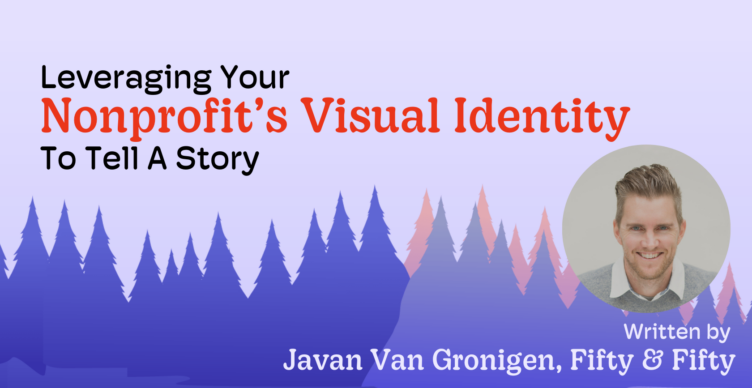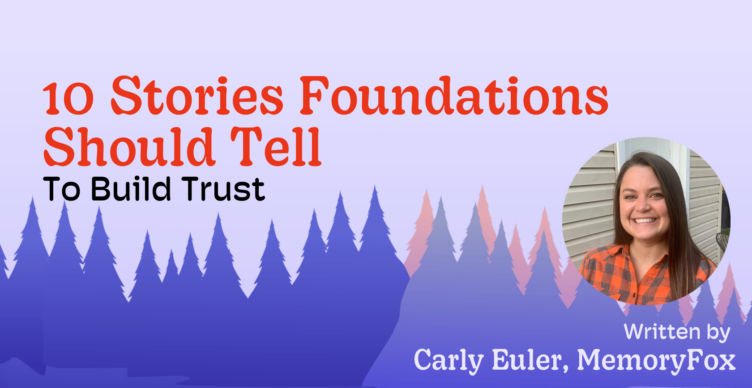Storytelling Strategy
Data-Driven Storytelling: 5 Questions for the Experts
In today’s competitive landscape, measuring and sharing your nonprofit’s impact in a compelling way is crucial for fundraising and brand recognition. There are two impact measurement categories nonprofits tend to use: quantitative and qualitative. However, the combination of impact numbers and great stories – or what we like to call “data-driven storytelling” – is where the real magic occurs!
This month, Sheri Chaney Jones of SureImpact and Chris Miano of MemoryFox combine their expertise to provide a holistic data-driven storytelling approach for nonprofit professionals. The event was broken down into three crucial parts:
First, Sheri Chaney Jones, Founder/CEO of SureImpact, discussed the process of collecting, analyzing, and presenting data effectively. Second, Chris Miano, Founder/CEO of MemoryFox, deep dove into the importance of using powerful stories to showcase your nonprofit’s achievements.
Third, Sheri and Chris fielded questions from the audience! Below are five of our favorite questions and answers from the event. The questions and answers below have been edited for clarity and length, but you can always watch the full recording here. Let’s see what the experts had to say:
What does data-driven storytelling mean, both in general and to you personally? Submitted by Melissa
Sheri: To me, data-driven storytelling relates to when you identify “The Five Whys” of having the metrics to tell the story. Our formula is basically:
- What did you do
- Who did you do it for
- How well did you do it, and
- How people are better off
Being able to answer those questions using data and then supplementing it with a great video testimony where someone was telling their story of how they received that service and how they’re now better off really solidifies it. This method intertwines emotion and care with the data.
Chris: When it comes to data-driven storytelling, I think of it in terms of logos, ethos and pathos. 
The logos is trying to appeal to a potential donor’s reasoning. That’s the part of you that craves statistics, which is important because it’s how someone measures many different organizations through one logical consistent framework. This data anchors the entire conversation you’re wanting to have with potential donors or foundations. Statistics allow you to appeal to donors on a logical level.
Then, on the ethos side, we’re demonstrating our ethics and integrity by elevating authentic human voices alongside data to support it. If you’re a foundation or a prospective donor, and you’re looking for organizations to support, people really crave organizations that know how to be transparent – that you’re thinking at that advanced level.
Finally, the pathos, which is more the appeal to emotions and sympathy – that’s where you want them to feel something. While statistics sort of stabilizes the message and makes it rigorous, the qualitative aspects activate the emotional part of the brain that inspire action. I think that’s why data data driven storytelling is such a great concept and a way to frame it.
How do I use storytelling to describe data impact? Submitted by Glenalyn
Sheri: The most powerful storytelling is when there’s a testimonial that is backed up with great statistics. You know that most donors and grantors are going to originally make the “purchase” decision because of the emotion, but they’re going to rationalize their decision with their brain. So, when you’ve got the emotional story with the analytical data to support it how your organization does it – it’s just kind of a no brainer investment!
Also, if you’re not using both you can create some unethical situations. If you’re just using only statistics, then the impact you’re making is not always as clear-cut as people may want it to be. For example, sometimes the data may not be as optimistic as you think it should be, but if you provide context with a story, then you’re painting the big picture!
 As the saying goes: the death of one person is a tragedy and the death of a million is a statistic. So, you want to have both sides of that to make sure that you’re being ethical about the way that you tell the story about your organization and you’re being truthful about your impact.
As the saying goes: the death of one person is a tragedy and the death of a million is a statistic. So, you want to have both sides of that to make sure that you’re being ethical about the way that you tell the story about your organization and you’re being truthful about your impact.
How do you present data in a visual, clear and impactful way? Submitted by Alexandra
Sheri: That’s a great question. I always feel like I sound like a broken record because I’m so in love with our formula:
- What did you do
- Who did you do it for
- How well did you do it, and
- How people are better off
If you build your impact measurement statement in that way where you’re able to answer these questions in a clear way, then your fundraising professionals can tell that story. As long as you are very clear about your metrics, then answering these questions is your best bet to convey your data in an impactful way.
How can nonprofits utilize client testimonials without exploiting people? Submitted by Libby
Chris: This is something that I’m very passionate about because I’m sort of a cynic about social media. Right now, social media is just like this behemoth that just churns out content – with quantity over quality. In fact, I think this is actually the most important topic in qualitative measurement.
Right now, there is an insatiable demand for video online. So, nonprofits have to tow the line between getting their message out there, tugging at someone’s heartstrings without being exploitative of their community. We are actually always learning about this and we’re trying to stay ahead of the game on it because it is so important.
I’m always the first to admit that I don’t have an easy answer for you. However, we did host a special event that talked about this in-depth with subject-matter experts. You can watch the recording here. There are thought leaders who have spent years researching and developing strategies revolving around this topic and I think it’s always a great idea to hear from them as this topic continues to evolve.
From my perspective, it’s all about “North Stars”. If you are committed to coming from a place of love, with a primary focus on elevating people’s stories – not just getting a “right” story – then you are on the right track. Do not be a tourist in other people’s misfortune. No matter their experiences, they are equal to you.
Ask them good questions that value their time, their unique emotions and take care to notice and recognize the difficulty they have, or are currently, enduring. I think as long as you keep that as a North Star, then you mostly won’t go wrong.
We are committed to continuing to build thought leadership around this topic, and I’m hopeful that the “answer” will become clearer over time. We’re all trying to learn that in real time. I would if it doesn’t feel right to YOU, then it’s safe to say that it will not feel right to your audience.
Can you share some public, free resources to use for data mining? Submitted by Julia
Sheri: Yes! There’s two ways to tell your story. First, I prefer that a nonprofit collects their own data about their own impact, but sometimes that might feel overwhelming. If you don’t feel equipped to collect your own data directly from your community, that’s where you can lean on the census. The US Census Data is available for free, and you can dive deep into your own specific community and understand the trend, the problems and the needs.
This data also is a great way to justify your case for support and to explain the need of why your nonprofit exists.
One easy way you can collect your own data from the actual participants is in a survey. There are several free survey tools.




